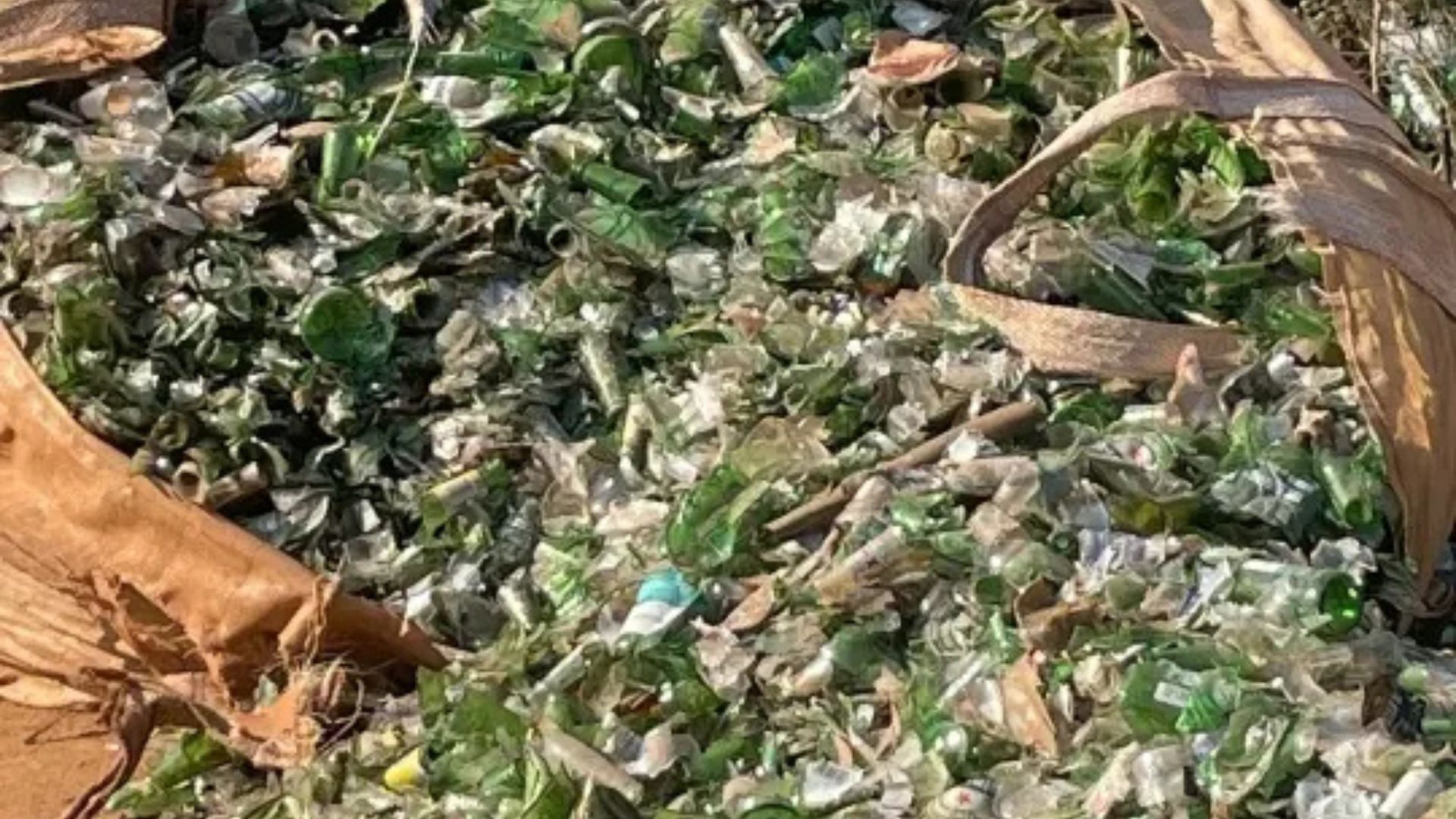Recycled glass could become part of the next big step in sustainable construction.
Scientists from the University of Portsmouth in the UK have discovered that recycled glass powder can effectively stabilize compressed earth blocks, offering a sustainable alternative to standard cement.
They found that a mix of 10% lime and 10% recycled glass particles created the strongest blocks.
“There is an increased demand for the use of recycled industrial waste as sustainable building and construction materials, so we wanted to assess the properties of compressed earth blocks using recycled glass particles,” said Dr Muhammad Ali, co-author and associate professor at the University of Portsmouth’s School of Civil Engineering and Surveying.
Recycled glass mixed with lime
Compressed earth blocks are building materials created from a mix of subsoil, including non-expansive clay, sand, and aggregates.
Instead of being baked in a kiln like conventional bricks, earth blocks solidify via a curing process that usually involves air drying, with water sometimes used as well.
Getting these blocks strong enough has usually meant using a lot of cement. The downside is, cement production leaves a large carbon footprint.
The Portsmouth team discovered that powdered recycled glass can be used as a stabilizing agent in compressed earth blocks.
The research involved rigorous testing, examining everything from water absorption to how much pressure the blocks could withstand.
The tests incorporated recycled waste glass particles (RWGP), with ratios ranging from 0% to 25%.
“After testing blocks with varying mixes using lime and recycled waste glass, we found that a composition of 10 per cent lime and 10 per cent recycled glass particles produced the strongest blocks with no cracking under intense pressure,” explained Dr Ali.
Improvement in compressive strength
Furthermore, these “green” blocks showed a massive 90% improvement in compressive strength compared to unstabilized versions.
Particularly, these earth blocks reached a top compressive strength of 5.77 MPa (megapascal – a unit of pressure).
As compared, the unstabilized block versions hit 3.03 MPa after 28 days of curing.
Similarly, the tensile strength peaked at 0.52 MPa, a 30% increase compared to the 0.40 MPa seen in unstabilized samples.
Apart from assessing the mechanical properties, researchers also used an electron microscope to study the blocks’ microstructural characteristics over a 28-day period.
Even under the microscope, the optimal mix revealed no visible cracks, showcasing its impressive structural integrity.
Future research could explore how well these greener construction materials perform in terms of heat retention and long-term resilience.
This discovery means recycled glass can genuinely replace cement in earth blocks, opening the door to massive reductions in cement use.
Moreover, the development is also a major step towards achieving a circular economy in construction. The goal of circular construction is to reduce the demand for fresh materials by giving building components a second life through reuse and repurposing.
Using waste glass as a core building material could lead to greener buildings, less landfill waste, and a more sustainable future for everyone.
In another development, Japanese researchers recently unveiled a new high-performance geopolymer-based soil solidifier.
This material is made from Siding Cut Powder (SCP), a construction waste byproduct, and earth silica (ES), which comes from recycled glass.
The development aims to reduce reliance on cement while also transforming construction waste into valuable resources.
